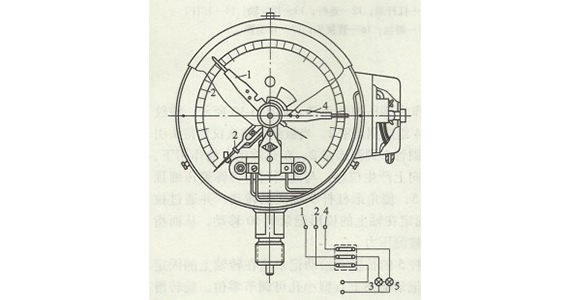1. Precautions in the selection and use of pressure gauges:
(1) The range of pressure gauges installed on boilers and pressure vessels should have a large range (the scale limit value on the dial) should be compatible with the working pressure of the equipment. The range of the pressure gauge is generally 1.5 to 3 times the working pressure of the equipment, preferably 2 times. If the selected pressure gauge has a large range, due to the pressure gauge with the same accuracy, the larger the range, the greater the absolute value of the allowable error and the deviation of the naked eye, which will affect the accuracy of the pressure reading; on the contrary, if the pressure gauge is selected If the range is too small, the working pressure of the equipment is equal to or close to the scale limit of the pressure gauge, which will cause the elastic element in the pressure gauge to be in a state of large deformation for a long time, which is prone to permanent deformation, which causes the error of the pressure gauge to increase and the service life of the pressure gauge is reduced. In addition, the range of the pressure gauge is too small, in case of overpressure operation, the pointer crosses a large range and approaches zero, which will give the operator an illusion and cause greater accidents. Therefore, the operating pressure range of the pressure gauge should not exceed 60 to 70% of the scale limit.
(2) The accuracy of the working pressure gauge is expressed as a percentage of the allowable error to the limit value of the dial scale. The accuracy level is generally marked on the dial. When selecting a pressure gauge, the accuracy should be determined according to the pressure level of the equipment and actual work needs.
(3) Dial diameter In order to enable the operator to accurately see the pressure value, the dial diameter of the pressure gauge should not be too small. If the pressure gauge is installed higher or far away from the post, the dial diameter should be increased.
(4) If the medium used by the pressure gauge for measurement is corrosive, then different elastic element materials must be selected according to the specific temperature, concentration and other parameters of the corrosive medium, otherwise the expected purpose will not be achieved.
(5) Pay attention to daily use and maintenance, regularly check, clean and keep records of usage.
(6) The general verification cycle of pressure gauges is half a year. Compulsory verification is a legal measure to ensure reliable technical performance of pressure gauges, accurate value transfer, and effective safe production.

2. Pressure gauge installation requirements
(1) The pressure gauge should be installed in a place that is easy to observe and easy to wash. At the same time, it should be protected from vibration and high temperature, and it should be illuminated with sufficient light.
(2) The pressure gauge should be installed independently and should not be connected to other pipes.
(3) There should be a water trap between the pressure gauge and the drum, and a three-way cock should be installed between the water trap and the pressure gauge.
When the trap is made of steel pipe, its inner diameter should not be less than 10mm; when it is made of copper pipe, its inner diameter should not be less than 6mm.
The installation of the three-way cock should be convenient for frequent flushing of the water trap, calibration, maintenance, disassembly and installation.
(4) Each boiler must be equipped with a pressure gauge directly connected to the steam space of the drum. Before the regulating valve of the water supply pipe, the outlet of the split economizer, between the outlet of the superheater and the main steam valve, the reheater superheater should be equipped with a pressure gauge.
(5) The calibration and maintenance of the pressure gauge device should comply with the regulations of the national metrology department. The pressure gauge should be calibrated before installation, and a red line should be drawn on the dial to indicate the working pressure. Check at least once every six months after installation. The pressure gauge should be sealed after calibration.







